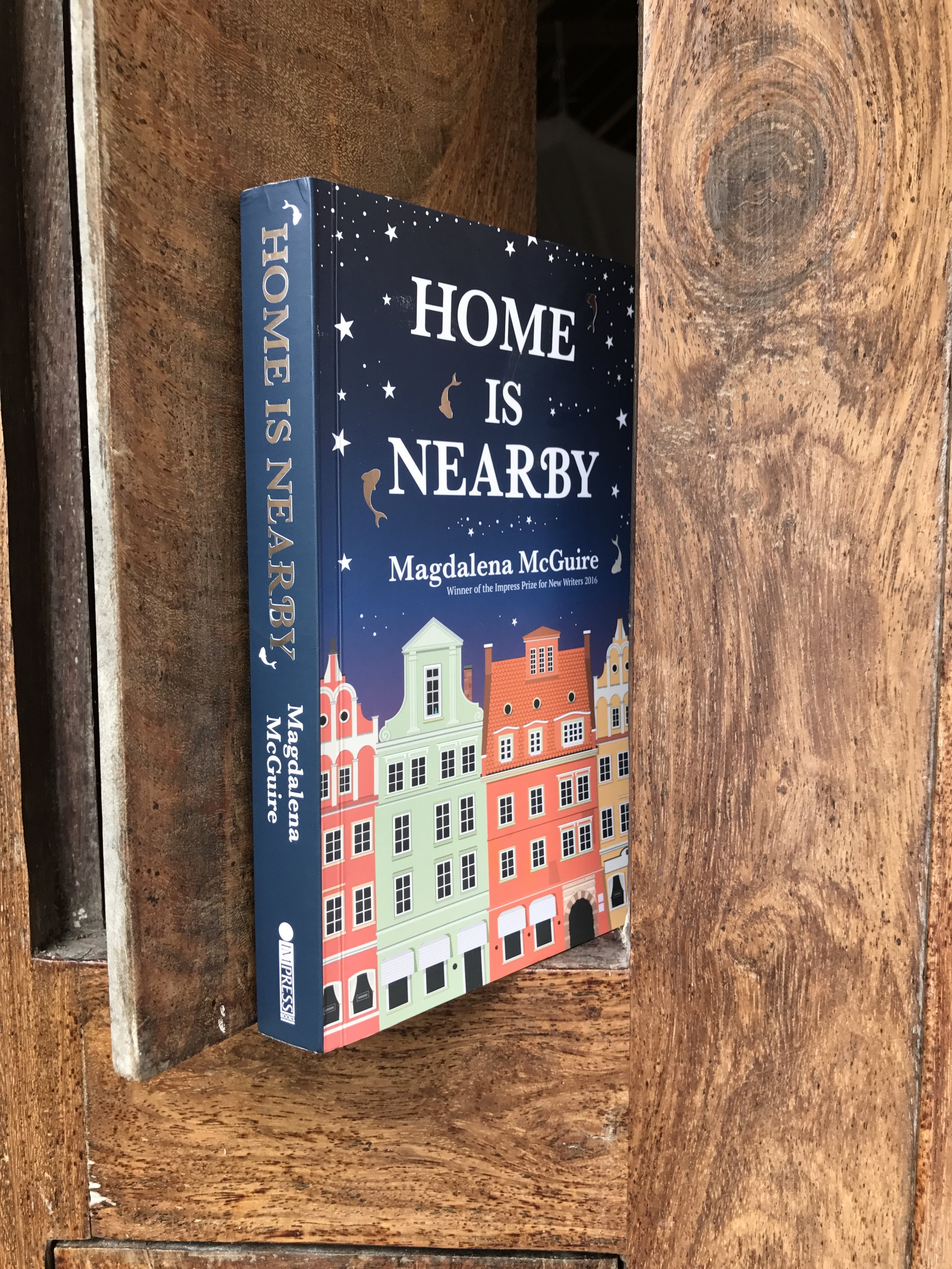'Home Is Nearby' is an evocative, lyrical and passionate debut from Magdalena Maguire. The narrative is involving and well-paced set in the 80's: the time of Solidarity in Poland. Cleverly, the political changes are charted through the journey of the 'next generation': heroine Ania, the artistic daughter of a rural stone mason, her move to university and the cast of bohemian, intellectual students she joins, loves and befriends there.
The major characters are well rounded, humane, idealistic and engaging. The reader is invested in Ania's tribulations, heartbreaking losses, choices, decisions, as they unfold against the revolutionary turmoil. There is also an integral refugee component reminding us of a time when Australia welcomed refugees (albeit of a certain approved 'type').
The beautiful cover art of 'Home is Nearby' standing out in Vanuatu.
The numerous settings of the novel are well evoked especially the rural country and the university days which provide a dramatic contrast to the later Australian scenes. Maguire writes convincingly and engagingly about the joys of art and creation and equally passionately of those who sell out, outsource, delegate or otherwise monetarise art.
Art and journalism – the power of words and culture to incite and inspire – play a central role in the narrative.
These arenas are Ania and her partner Dominik's sustenance and salvation. There is a performance artist, Malgorzata, who conjured a young Marina Abramović (seen in 'The Museum of Love') for me.
I'm glad Maguire has moved to novel writing, she's a talented addition. The icing on the cake is the gorgeous cover seen here nestled in a handmade wooden shutter on holiday in Vanuatu!
Reviewed as part of the Australian Women Writer's Challenge, 2018.



